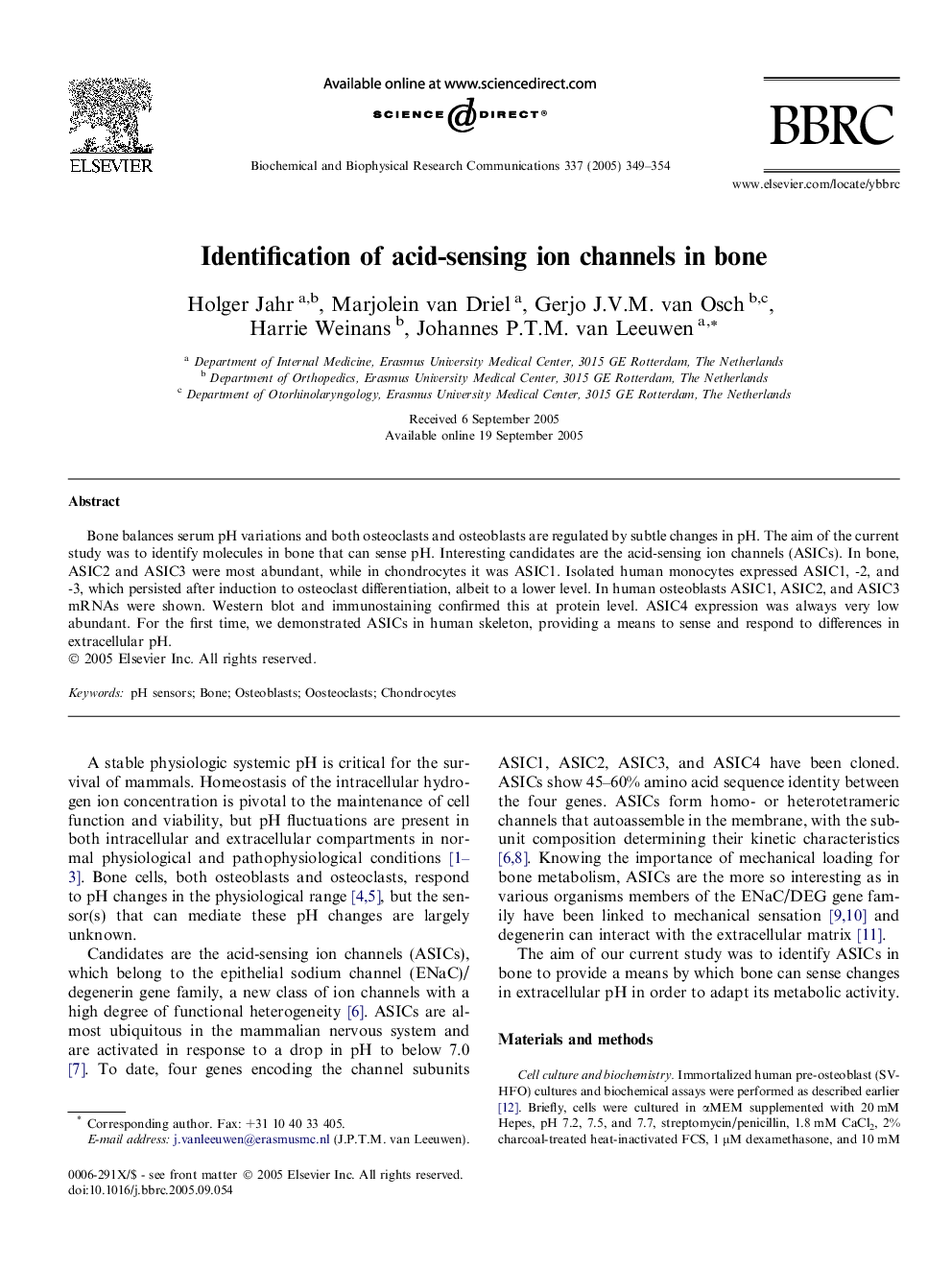| Article ID | Journal | Published Year | Pages | File Type |
|---|---|---|---|---|
| 10769407 | Biochemical and Biophysical Research Communications | 2005 | 6 Pages |
Abstract
Bone balances serum pH variations and both osteoclasts and osteoblasts are regulated by subtle changes in pH. The aim of the current study was to identify molecules in bone that can sense pH. Interesting candidates are the acid-sensing ion channels (ASICs). In bone, ASIC2 and ASIC3 were most abundant, while in chondrocytes it was ASIC1. Isolated human monocytes expressed ASIC1, -2, and -3, which persisted after induction to osteoclast differentiation, albeit to a lower level. In human osteoblasts ASIC1, ASIC2, and ASIC3 mRNAs were shown. Western blot and immunostaining confirmed this at protein level. ASIC4 expression was always very low abundant. For the first time, we demonstrated ASICs in human skeleton, providing a means to sense and respond to differences in extracellular pH.
Related Topics
Life Sciences
Biochemistry, Genetics and Molecular Biology
Biochemistry
Authors
Holger Jahr, Marjolein van Driel, Gerjo J.V.M. van Osch, Harrie Weinans, Johannes P.T.M. van Leeuwen,
